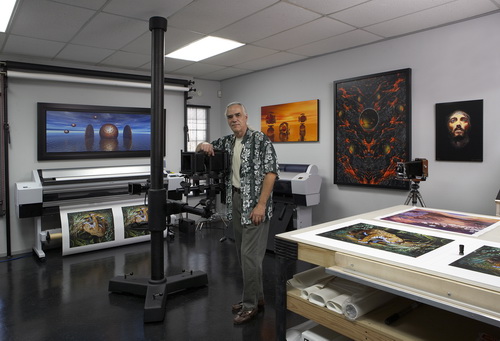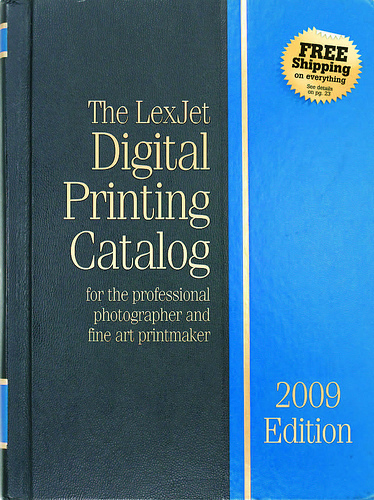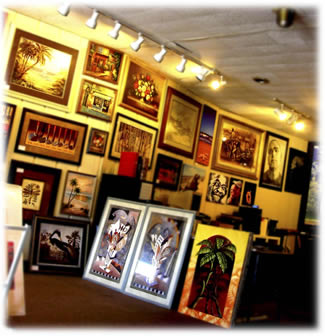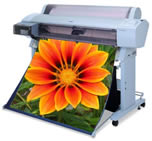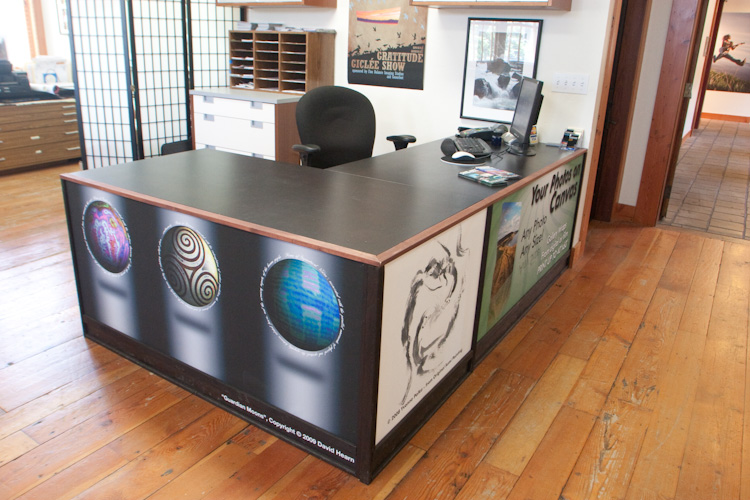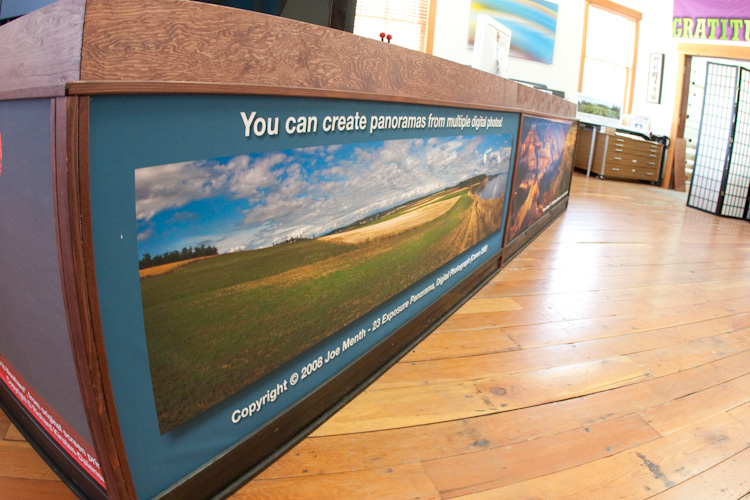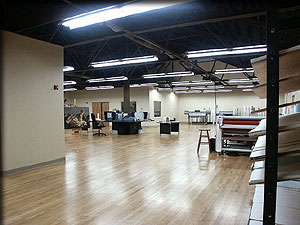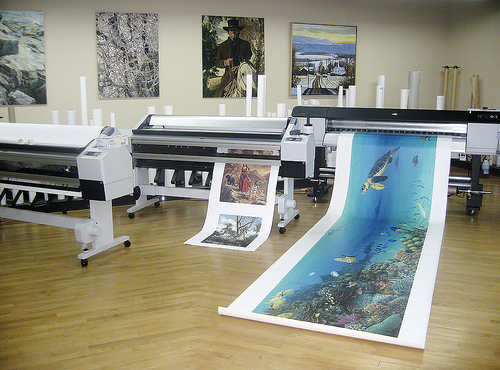By Dustin Flowers

The newest issue of LexJet’s In Focus newsletter shines the Artist Spotlight on one of my customers, photographer and master printer Bob Tursack of Brilliant Studio and Brilliant Graphics in Exton, PA (near Philadelphia).
Brilliant Studio provides top-quality printmaking in the broadest sense of the word. While Bob can reproduce art with the utmost fidelity, he believes he does his best work for artists and photographers who trust him as a collaborator. He regards printmaking as an art in itself—an extension of what can be achieved with cameras, paintbrushes, or drawing tools alone. Thus, he feels comfortable recommending ways clients can achieve the highest artistic realization of the image they had visualized from the start.
Brilliant Studio works with many galleries, publishers, artists, and photographers and has printed reproductions for painters such as the late Andrew Wyeth and photographs by Michael Furman, George Tice, and Yaakov Asher Sinclair.
At first, Brilliant Studio outsourced the printing of artists’ books and gallery catalogs. But because Bob grew up in a family that ran a commercial printing business, he decided to establish Brilliant Graphics as a companion business. He bought a Heidelberg press, developed a computer-integrated printing workflow, and now prints brochures, annual reports, corporate marketing materials, catalogs, posters, and perfect-bound and casebound books.
Brilliant Graphics provides these printing services not only to galleries, artists and photographers, but to other businesses as well. They are particularly skilled in printing publications that require superb image reproduction. For example, Brilliant Graphics produced catalogs for Swann Galleries, the New York auction house that sells works from the earliest days of photography to images by modern masters.
Outstanding Facilities: Earlier this month, I was honored to be invited to the Open House Brilliant Studio hosted for current and prospective clients. Their studio was unbelievably clean and well-equipped. Not only were their customer reception and proofing areas immaculate, but so were their camera rooms, printrooms, and computer rooms.
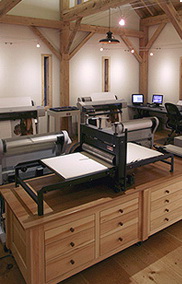
The post-and-beam construction of their building may look rustic, quaint and homey, but everything inside the building was specifically designed for optimizing workflow, enhancing communications with customers, and controlling print quality.
For capturing original artwork, Brilliant Studio uses Phase One and Hasselblad cameras and Creo Eversmart Pro Scanners.
They can make prints on a wide range of equipment, including four 44-in. Epson Stylus Pro 9800 printers with the ImagePrint RIP, a 64-in. Epson Stylus Pro 11880 printer, and a Ryobi four-color waterless offset lithography press. In the midst of all new technology stands an antique etching press, which can be used either for copperplate etchings or relief prints from woodcuts or linoleum cuts.
Empathy and Advice: As a photographer himself, Tursack understands that when photographers give him an original file to print they are giving him a piece of their soul. He says, “I know what goes into creating an image and the sense of great disappointment that can be felt when something you created isn’t reproduced well.”
He encourages artists to freely tell him when they don’t like something. But he also feels comfortable enough to suggest ways they can improve the market acceptance of their work without compromising their artistic integrity.
Marketing Support: Bob Tursack and his staff are happy to help good artists get their work noticed. When appropriate, they introduce artists to some of their gallery or publisher clients.
And the marketing consultants and designers at Brilliant Graphics can help artists create branding and identity packages, and advertise their work in regional lifestyle magazines and art trade journals.
Brilliant Studio also produces a bimonthly mailing of full-color art cards to 3,000 qualified contacts in the print-sales marketplace. Each card features the work of a single artist with details about the artist and available print sizes.

In-Depth Media Evaluation: One role Tursack takes very seriously is helping the artist choose the right paper or canvas for each print. He recommends a paper for a particular job based on its color gamut, maximum density, tactile quality, archival nature, and what the paper will add to the personality of the print.
Depending on the requirements of a particular job, he may recommend a Hahnemuhle German Etching, Photo Rag Bright White, Photo Rag Satin, Fine Art Pearl, Photo Rag, or Fine Art Baryta. For prints output on canvas, I am pleased to report that he uses LexJet Sunset Select Matte Canvas or Instant-Dry Satin Canvas.
Bob Tursack evaluates different materials so that the artist’s trust in his expertise will be rewarded. He believes that “Understanding where an artist is trying to go with their work is by far the most important part of what we do.”
It’s hard to describe how impressed I was when I visited Brilliant Studio earlier this month. I encourage you to read more in the story In Focus, or visit the websites of Brilliant Graphics and Brilliant Studio and see for yourself what makes this business unique.


